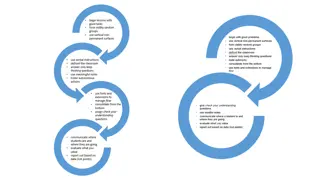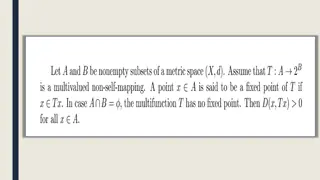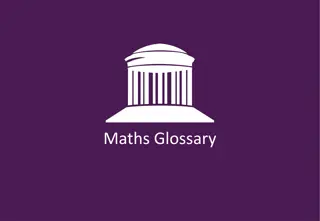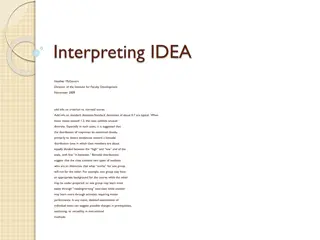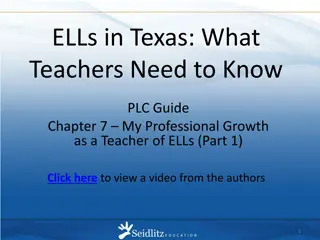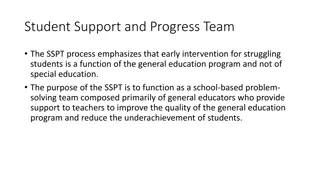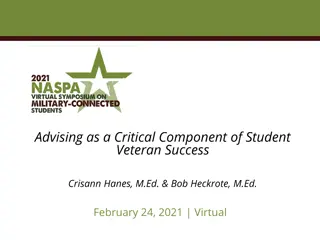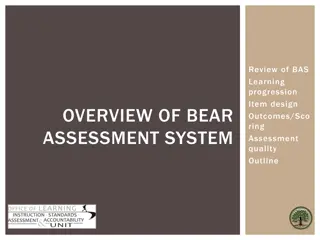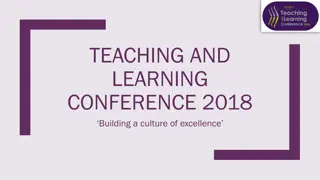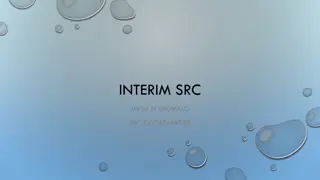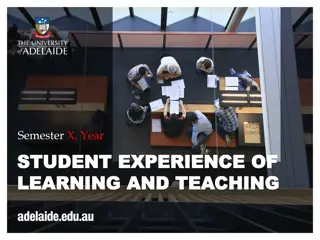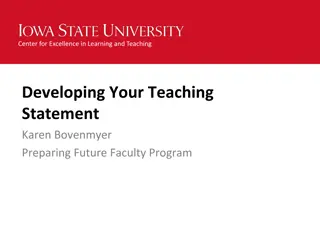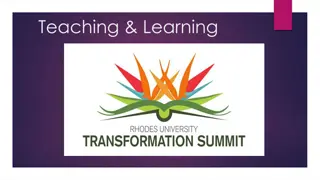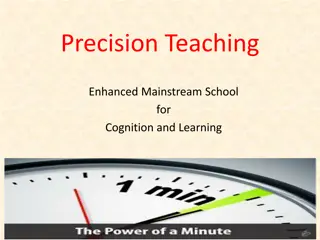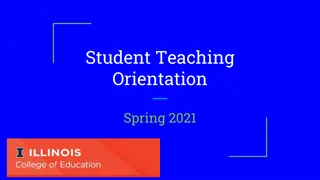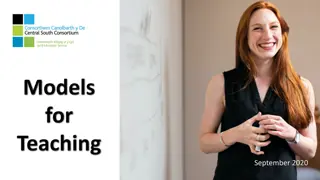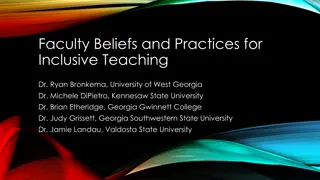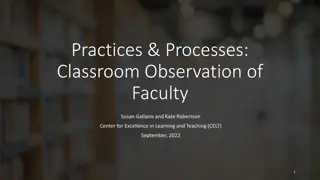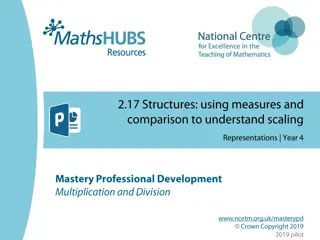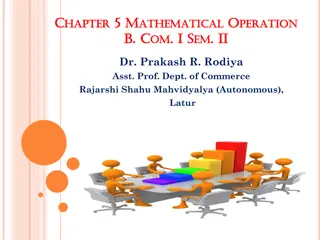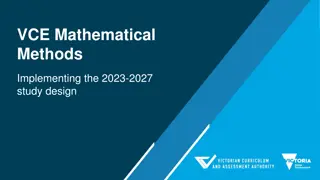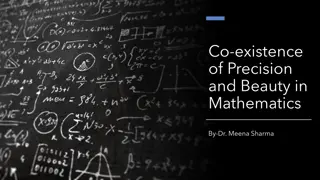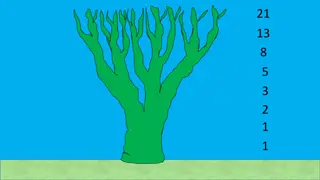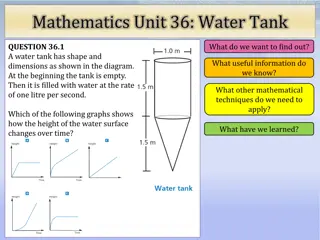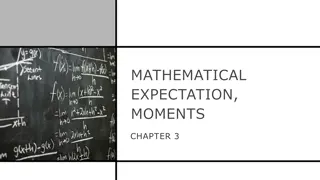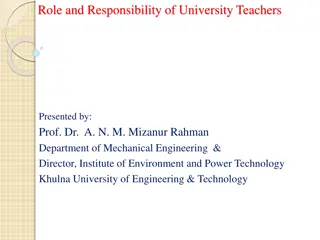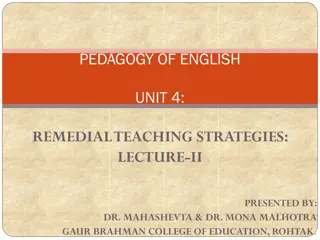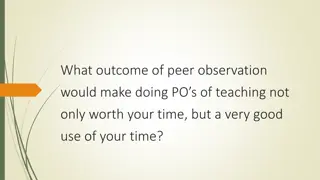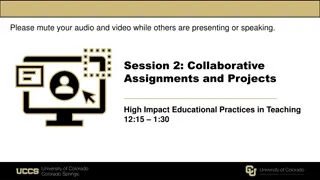Enhancing Mathematical Teaching Practices for Student Success
Explore the evolution of standards-based mathematics education reform through a 25-year journey, emphasizing the crucial role of effective teaching in ensuring mathematical success for all students. Discover the challenges faced in improving math education and the principles that guide meaningful learning experiences for students. Dive into teaching beliefs and practices to engage students in reasoning mathematically to enhance their understanding of mathematical concepts.
Download Presentation

Please find below an Image/Link to download the presentation.
The content on the website is provided AS IS for your information and personal use only. It may not be sold, licensed, or shared on other websites without obtaining consent from the author. Download presentation by click this link. If you encounter any issues during the download, it is possible that the publisher has removed the file from their server.
E N D
Presentation Transcript
Principles to Actions: Effective Mathematical Teaching Practices Fitting Boxes into Boxes: A WV Classroom Video Experience Grade 6
A 25-year History of Standards-Based Mathematics Education Reform
A 25-year History of Standards-Based Mathematics Education Reform 2014 Principles to Actions: Ensuring Mathematical Success for All The overarching message of Principles to Actions is that effective teaching is the non- negotiable core necessary to ensure that all students learn mathematics.
WV College- and Career- Readiness Standards for Mathematics (2016) The West Virginia College- and Career-Readiness Standards for Mathematics define what students should understand and be able to do in their study of mathematics. However, the Standards do not describe or prescribe the essential conditions required to make sure mathematics works for all students.
Although We Have Made Progress, Challenges Remain The average mathematics NAEP score for eighth grade students has been essentially flat since 2009. Among 79 countries participating in the 2018 Programme for International Student Assessment (PISA) of 15-year-olds, the U.S. ranked 37th in mathematics. Significant learning differentials remain.
Teaching and Learning Principle An excellent mathematics program requires effective teaching that engages students in meaningful learning through individual and collaborative experiences that promote their ability to make sense of mathematical ideas and reason mathematically. Principles to Actions (NCTM, 2014, p.7)
Beliefs About Teaching and Learning Mathematics - Activity DIRECTIONS In a group or with a partner: 1. Open the packet and remove the cards. 2. Find the header cards: Productive and Unproductive. Place these cards on the table. 3. Each of the remaining cards identifies a belief about teaching and learning. Read each of the belief cards. 4. Identify which belief cards are Productive and which belief cards are Unproductive. 5. Place each belief card under the header card to which it was matched. 6. Be prepared to defend your decisions.
We Must Focus on Instruction Student learning of mathematics depends fundamentally on what happens inside the classroom as teachers and learners interact over the curriculum. (Ball & Forzani, 2011) Teaching has 6 to 10 times as much impact on achievement as all other factors combined Just three years of effective teaching accounts on average for an improvement of 35 to 50 percentile points. (Schmoker, 2005)
Effective Mathematics Teaching Practices 1. Establish mathematics goals to focus learning. 2. Implement tasks that promote reasoning and problem solving. 3. Use and connect mathematical representations. 4. Facilitate meaningful mathematical discourse. 5. Pose purposeful questions. 6. Build procedural fluency from conceptual understanding. 7. Support productive struggle in learning mathematics. 8. Elicit and use evidence of student thinking.
Effective Mathematics Teaching Practices Look Fors
WV Classroom Video Fitting Boxes Into Boxes Overview Students calculate the number of jewelry boxes that will fit into three different sizes of shipping boxes and determine the associated costs with each container. Students experiment with different arrangements for the jewelry boxes to optimize space and minimize cost in the shipping boxes to conclude the most economical way to ship the jewelry boxes. Upon successful task completion, students will: Explain their strategies and reasoning of their solution. Evaluate their decisions about how to fit all 270 jewelry boxes so they ship at the lowest cost. Compare and contrast (orally and using other representations) different ways jewelry boxes could be packed inside larger shipping boxes. Make simplifying assumptions and determine what information is needed to solve a problem about shipping costs.
A Closer Look Fitting Boxes into Boxes WV Classroom Video Experience and the Effective Mathematics Teaching Practice: Establish Mathematics Goals to Focus Learning
Establish Mathematics Goals to Focus Learning Learning Goals should: Clearly state what it is students are to learn and understand about mathematics as the result of instruction. Be situated within learning progressions. Frame the decisions that teachers make during a lesson.
Establish Mathematics Goals to Focus Learning Formulating clear, explicit learning goals sets the stage for everything else. (Hiebert, Morris, Berk & Janssen, 2007)
WATCH VIDEO NCTM Principles to Action: Establish Mathematics Goals to Focus Learning Video
Establish Mathematics Goals to Focus Learning
Fitting Boxes into Boxes Lesson Alignment to the West Virginia College- and Career-Readiness (WVCCR) Standards .M.6.4 Interpret and compute quotients of fractions and solve word problems involving division of fractions by fractions by using visual fraction models and equations to represent the problem. (e.g., Create a story context for (2/3) (3/4) and use a visual fraction model to show the quotient; use the relationship between multiplication and division to explain that (2/3) (3/4) = 8/9 because 3/4 of 8/9 is 2/3. (In general, (a/b) (c/d) = ad/bc.) How much chocolate will each person get if 3 people share 1/2 lb of chocolate equally? How many 3/4- cup servings are in 2/3 of a cup of yogurt? How wide is a rectangular strip of land with length 3/4 mi and area square mi?) M.6.22 Find the volume of a right rectangular prism with fractional edge lengths by packing it with unit cubes of the appropriate unit fraction edge lengths and show that the volume is the same as would be found by multiplying the edge lengths of the prism. Apply the formulas V = l w h and V = B h to find volumes of right rectangular prisms with fractional edge lengths in the context of solving real-world and mathematical problems.
WV Classroom Video Fitting Boxes into Boxes Goals to focus learning should be written in student-friendly language Upon successful completion, students will: Explain their strategies and reasoning of their solution. Evaluate their decisions about how to fit all 270 jewelry boxes so they ship at the lowest cost. Compare and contrast (orally and using other representations) different ways jewelry boxes could be packed inside larger shipping boxes. Make simplifying assumptions and determine what information is needed to solve a problem about shipping costs.
Establish Mathematics Goals to Focus Learning In the WV Classroom Video: Video Clip #1 Video Clip #2 1. What were the math expectations for student learning? 2. In what ways did the math goals focus the teacher s interactions with students throughout the lesson?
A Closer Look Fitting Boxes into Boxes WV Classroom Video Experience and the Effective Mathematics Teaching Practice: Implement Tasks That Promote Reasoning and Problem Solving
Implement Tasks That Promote Reasoning and Problem Solving Mathematical tasks should: Provide opportunities for students to engage in exploration or encourage students to use procedures in ways that are connected to understanding concepts Build on students current understanding and experiences Have multiple entry points Allow for varied solution strategies
Why Are Tasks So Important? Mathematical tasks : Represent the meat of instruction Are how we engage students and support the development of mathematical understanding Connect learning goals to the actual classroom opportunity to learn Use procedures to get answers to simple problems BUT are opportunities to develop deeper and broader understanding and application of mathematics
What Makes a GOOD Task? GOOD Mathematical Tasks Are: Accessible Have clear directions and multiple entry points Fair All students are able to complete the task Reasonable Not too complex and have familiar context Aligned Matches standards and current learning goals Comprehensive Integrate key understandings and big enough bang for the time commitment Engaging Use graphics and have an intriguing or familiar context Divergent Have multiple pathways to solve
Implement Tasks That Promote Reasoning and Problem Solving Based on the WV Classroom Video: Video Clip In what ways did the implementation of the task allow for multiple entry points and engage students in reasoning and problem solving?
A Closer Look Fitting Boxes into Boxes WV Classroom Video Experience and the Effective Mathematics Teaching Practice: Use and Connect Mathematical Representations
Use and Connect Mathematical Representations Because of the abstract nature of mathematics, people have access to mathematical ideas only through the representations of those ideas. (National Research Council, 2001, p.94)
Use and Connect Mathematical Representations Representations embody critical features of mathematical constructs and actions, such as drawing pictures, creating tables, or using manipulatives to show and explain mathematical understanding. When students learn to represent, discuss, and make connections among mathematical ideas in multiple forms, they demonstrate enhanced problem-solving ability.
Different Types of Mathematical Representations
Use and Connect Mathematical Representations Teachers should: Allocate instructional time for students to use, discuss, and make connections among representations Encourage students to explain, elaborate or clarify their thinking Ask students to use pictures to explain and justify their reasoning
Rich Mathematical Task Rubric Representations and Connections TASK LEVEL DESCRIPTION OF USE AND CONNECTION OF REPRESENTTIONS Uses representations to analyze relationships and extend thinking Uses mathematical connections to extend the solution to other mathematics or to deepen understanding Uses a representation or multiple representations to explore and model the problem Makes a mathematical connection that is relevant to the context of the problem DEVELOPING Uses an incomplete or limited representation to model the problem Makes a partial mathematical connection or the connection is not relevant to the context of the problem EMERGING Uses no representation or uses a representation that does not model the problem Makes no mathematical connections ADVANCED PROFICIENT
Use and Connect Mathematical Representations Based on the WV Classroom Video: Video Clip 1. What mathematical representations were students using in the lesson? 2. How did the teacher support students in making connections between and within different types of representations? 3. What is the Task Level for the Fitting Boxes into Boxes lesson? Explain your rating.
A Closer Look Fitting Boxes into Boxes WV Classroom Video Experience and the Effective Mathematics Teaching Practice: Facilitate Meaningful Mathematical Discourse
Facilitate Meaningful Mathematical Discourse Mathematical discourse should: Build on and honor students thinking; Provide students with the opportunity to share ideas, clarify understandings, and develop convincing arguments; and Advance the math learning of the whole class. Mathematical discourse includes the purposeful exchange of ideas through classroom discussion, as well as through other forms of verbal, visual and written communication. The discourse in the mathematics classroom gives students opportunities to share ideas, clarify understandings, construct convincing arguments, develop language for expressing mathematical ideas, and learn to see things from other perspectives.
Facilitate Meaningful Mathematical Discourse Set up classroom norms so that everyone knows their role in the classroom. The teacher's role includes orchestrating discourse by: Posing questions to challenge student thinking; Listening carefully and monitoring understanding; and Encouraging each student to participate - even if it means asking, "Who can repeat what Andrew said?" or "Who can explain in another way what Bailey did?" The student's role includes: Listening and responding to the teacher and one another; Using a variety of tools to reason, make connections, solve problems; and Communicating, and make convincing arguments of particular representations, procedures, and solutions.
Facilitate Meaningful Mathematical Discourse
Impact of Meaningful Mathematical Discourse
Facilitate Meaningful Mathematical Discourse Based on the WV Classroom Video: Video Clip 1. What teacher actions did you view that supported meaningful mathematical discourse? Cite evidence from the video to support your response. 2. Did the mathematical discourse within the lesson promote equity in the classroom? If yes, how? If no, what could the teacher have done to promote equity through mathematical discourse? 3. To what extent did the discourse facilitate student explanations or clarify their thinking?
A Closer Look Fitting Boxes into Boxes WV Classroom Video Experience and the Effective Mathematics Teaching Practice: Pose Purposeful Questions
Pose Purposeful Questions Effective teaching of mathematics uses purposeful questions to assess and advance student reasoning and sense making about important mathematical ideas and relationships.
Pose Purposeful Questions Effective Questions should: Reveal students current understandings Encourage students to explain, elaborate or clarify their thinking Make the mathematics more visible and accessible for students Teachers questions are crucial in helping students make connections and learn important mathematics concepts. Teachers need to know how students typically think about particular concepts, how to determine what a particular student or group of students thinks about those ideas, and how to help students deepen their understanding.
Five Types of Questions Question Type Gathering Information Purpose Ask students to recall facts, definitions, or procedures. Ask students to explain, elaborate, or clarify their thinking, including articulating the steps in solution methods or completion of a task. Probing thinking Ask students to discuss mathematical structures and make connections among mathematical ideas and relationships. Making the mathematics visible Reveal deeper insight into student reasoning and actions, including asking students to argue for the validity of their work. Encouraging reflection and justification Help students to develop an understanding of each other s solution paths and thinking, and lead to the co-construction of mathematical ideas. Engaging with the reasoning of others
Pose Purposeful Questions Based on the WV Classroom Video: Video Clip 1. What did you notice about the questions the teacher asked? 2. What purposes did the questions appear to serve? 3. Were all students ideas and questions heard, valued and pursued? Cite evidence from the video to support your response.
A Closer Look Fitting Boxes into Boxes WV Classroom Video Experience and the Effective Mathematics Teaching Practice: Build Procedural Fluency from Conceptual Understanding
Build Procedural Fluency from Conceptual Understanding Effective teaching of mathematics builds fluency with procedures on a foundation of conceptual understanding so that students, over time, become skillful in using procedures flexibly as they solve contextual and mathematical problems. A rush to fluency undermines students confidence and interest in mathematics and is considered a cause of mathematics anxiety. (Ashcraft 2002; Ramirez Gunderson, Levine, & Beilock, 2013)
Build Procedural Fluency from Conceptual Understanding Procedural Fluency should: Build on a foundation of conceptual understanding Over time (months, years), result in known facts and generalized methods for solving problems Enable students to flexibly choose among methods to solve contextual and mathematical problems.
Build Procedural Fluency from Conceptual Understanding To use mathematics effectively, students must be able to do much more than carry out mathematical procedures. They must know which procedure is appropriate and most productive in a given situation, what a procedure accomplishes, and what kind of results to expect. Mechanical execution of procedures without understanding their mathematical basis often leads to bizarre results.
Build Procedural Fluency from Conceptual Understanding What are teachers doing? What are students doing? Providing students with opportunities to use their own reasoning strategies and methods for solving problems. Making sure that they understand and can explain the mathematical basis for the procedures that they are using. Asking students to discuss and explain why the procedures that they are using work to solve particular problems. Demonstrating flexible use of strategies and methods while reflecting on which procedures seem to work best for specific types of problems. Connecting student-generated strategies and methods to more efficient procedures as appropriate. Determining whether specific approaches generalize to a broad class of problems. Using visual models to support students understanding of general methods. Striving to use procedures appropriately and efficiently. Providing students with opportunities for distributed practice of procedures.






